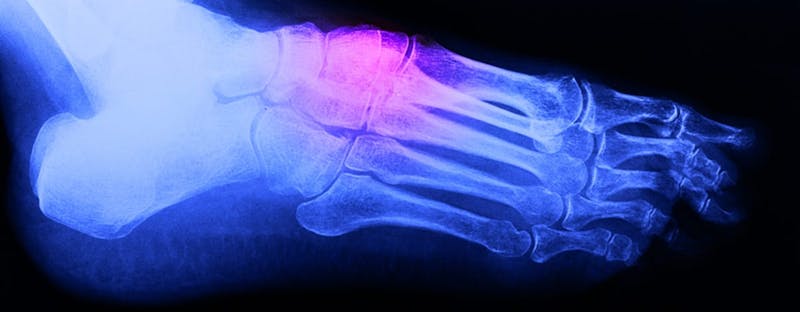Schedule a Consultation
Contact Us


The foot is comprised of 26 bones that, in spite of their relatively small size, do a remarkable job of supporting our weight and getting us from place to place. An accident or trauma can crush, twist, bend, or otherwise fracture these bones. The following looks at the most common types of foot fractures and how they are treated.
Toe Fractures
Toe fractures typically occur as the result of stubbing the toe against a heavy object. They are a common type of foot fracture and generally heal well with little intervention within six to eight weeks.
Metatarsal Fractures
The metatarsals are the longer bones at the base of each toe. A fracture of the first metatarsal, which is attached to the big toe, may require a cast, surgery, and crutches. A fracture of the middle three metatarsals usually responds well to partial weight-bearing and a rigid flat-bottom shoe. The fifth metatarsal, which is attached to the little toe, is the most frequently fractured bone in the midfoot. There are two basic types of fractures that affect the fifth metatarsal:
Heel Fractures
This type of fracture occurs when someone lands on their feet after jumping or falling from a substantial height. The most common type of heel fracture requires surgery. Other treatments may include casts, splints, and avoiding weight bearing activity.
Stress Fractures
Stress fractures are hairline cracks that can occur when bones are subjected to repeated stress over an extended period. They are often seen in runners, dancers, gymnasts, and soldiers marching in full gear. In most cases, stress fractures heal well by reducing the pressure on the foot to allow the bone time to regenerate. This typically involves limiting weight-bearing activity by using crutches or wearing supportive shoes.
When to See a Doctor
Anyone suspecting they have a broken foot should see a doctor immediately if they develop any of the following: